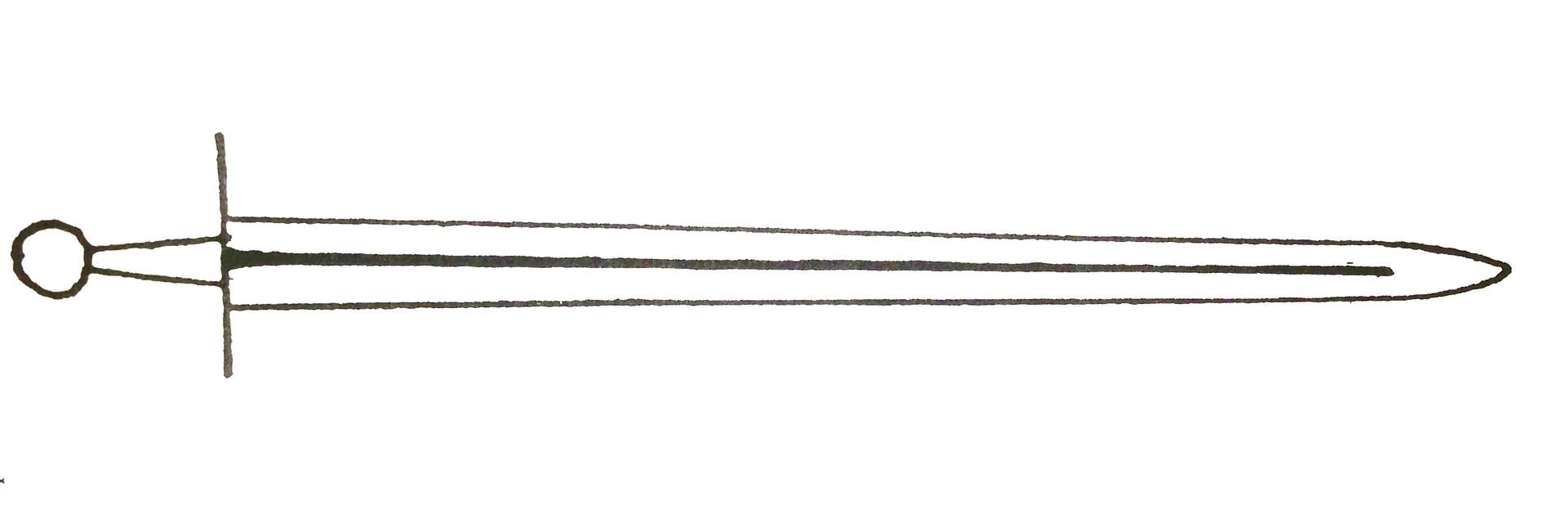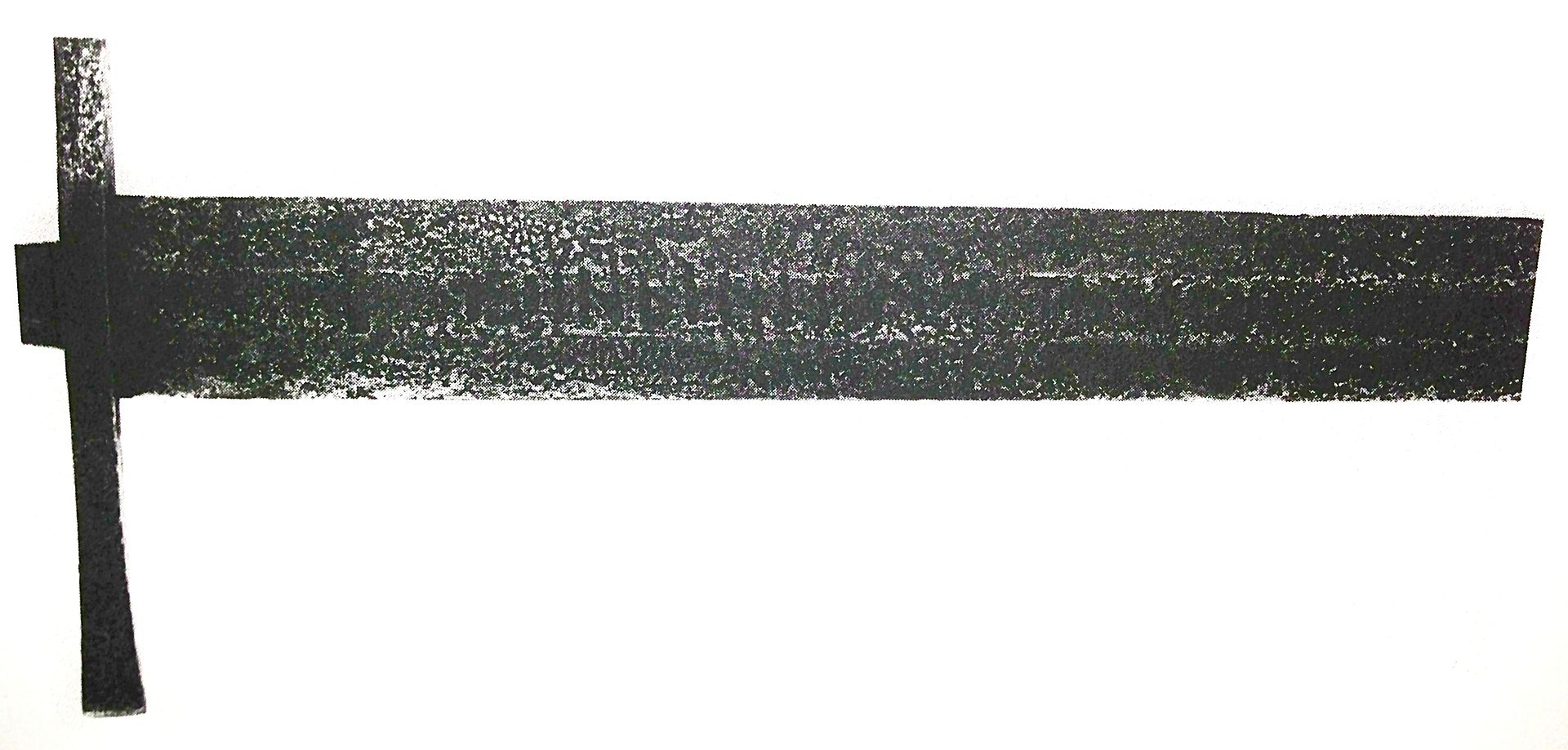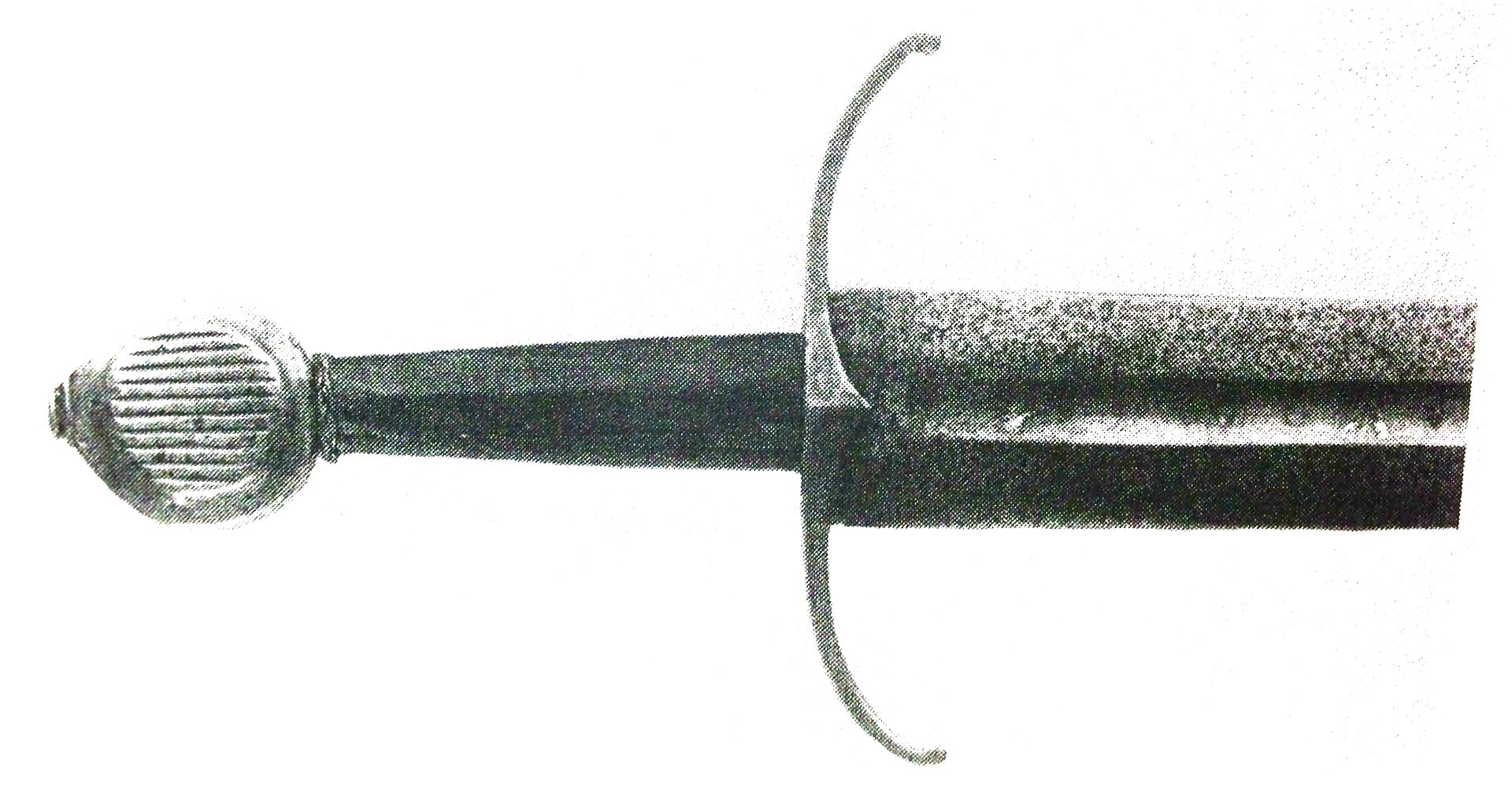Oakeshott Type Xa - Records of the Medieval Sword
Jul 2, 2013 15:59:12 GMT
Post by Jack Loomes on Jul 2, 2013 15:59:12 GMT
Link to Sword-Site's Collection of Original Historic Type Xa Swords Here: sword-site.com/board/21/oakeshott-type-xa-swords
Extract from Records of the Medieval Sword by Ewart Oakeshott.
Characteristic of this type is a long fuller, like a X, only narrower - but no so narrow as an XI. This is a very fine distinction and may seem unnecessary. In fact, in my original typology of 1960, I had not isolated it; I put all Xa's into Type XI. It was only when The Sword in the Age of Chivalry was reprinted in 1980 that I decided that there was a clear distinction, and so in a new preface to the book I added my new Type Xa. It may seems a silly distinction, depending only upon the breadth of the fuller, but I think it is better that such a distinction be made. There is no real difference in dating X's and Xa's for both types were in use together from c. 1000 on. This is proven beyond any reasonable doubt by a series of swords found in the early 1950s by Dr Jorma Leppaaho, of Helsinki University, in a large group of late Viking graves in southern Finland. These are all clearly dateable to the second half of the 11th century, give or take a decade each way; and the information as to reliable dating, not by the form of blades and hilts but by the style and 'handwriting' of inlaid inscriptions, which subsequent x-ray photography of the blades provided, is absolutely crucial to the segregation of types of sword and sword-inscriptions, and their dating. Among these finds, the incidence of X types and Xa's was about equal.

Xa. 9
Type: Xa
Find-place: Unknown
Collection: Glasgow Museum & Art Gallery (Ex.cool. Sir Edward Barry) A.6533
Blade-length: 36' (91cms)
Pommel-type: R
Cross-style: A slender form of Style 5
Date: c.1050-1100 (give or take a couple of decades each way)
Condition: Excavated, very good. The surface is lightly corroded in a curious mottled way, looking like some kinds of pattern-welding; but since this mottling goes over to the edges, it is most likely to be a rather unusual corrosion pattern produced by whatever organic stuff surrounded it.
The remains of the iron-inlaid inscription (the inlaid strips have gone) is still decipherable. The spherical pommel is very small, which gives the sword an awkward, unbalanced look.


Xa. 17
Type: Xa
Find-place: Unknown
Collection: Private
Blade-length: 34&1/2' (87.6cms)
Pommel-type: J
Cross-style:9
Date: Blade c.110, hilt, c.1450
Condition: Excellent. The long blade is hardly corroded at all, its surface being covered only with patches of shallow staining. There are a few marks of usage on the edges, but not significant. The hilt is of latten, once gilded (a tiny trace only seems to survive on one side of the elegantly modeled rivet-block. The central boss of the pommel is longitudinally ridged. The original grip of ?lime-wood survives, with a a narrow Turk's head of brass wire (contemporary with the hilt) below the pommel. IN the narrow fuller in the blade, inlaid in iron, are the names +IESUS+ on one side and MARIA on the other. Following the second letter A in this name is an inlaid symbol (also in iron) which though extremely hard to see may perhaps be a rather naturalistic representation of the lily-flower always associated with Our Lady. At some time, an over-enthusiastic owner of the sword tried to enhance, or to make more visible, the letters of these inscriptions and began to engrave round their outlines. He ruined the I, E and S of the IESUS inlays, but fortunately gave up, and left the remainder alone. Had he done all ten letters, it would not be possible to see that they were in face inlaid in iron. This sword was examined in the Royal Armouries on 27 April, 1989, when the metal of the hilt was definitely proved to be 15th century latten. This fine sword provides an absolutely classic example of an old blade still in use, or re-used, three centuries after is making and mounted in a handsome, new, fashionable hilt. The sword is also important by reason of the (so far as I know at present) uniquely used holy names, inlaid in iron. There are INNOMINEDOMINI inscriptions, in iron, in plenty; there is on Viking blade inlaid on each side with the word AMEN, but this is in silver.


Oakeshott Sword Type X: sword-site.com/thread/118/oakeshott-type-records-medieval-sword
Oakeshott Sword Type Xa: sword-site.com/thread/123/oakeshott-type-records-medieval-sword
Oakeshott Sword Type XI - XIa: sword-site.com/thread/126/oakeshott-type-records-medieval-sword
Oakeshott Sword Type XII: sword-site.com/thread/127/oakeshott-type-records-medieval-sword
Oakeshott Sword Type XIIa: sword-site.com/thread/128/oakeshott-type-records-medieval-sword
Oakeshott Sword Type XIII - XIIIb: sword-site.com/thread/152/oakeshott-xiiib-records-medieval-sword
Oakeshott Sword Type XIV: sword-site.com/thread/159/oakeshott-type-records-medieval-sword
Oakeshott Sword Type XV - XVa: sword-site.com/thread/166/oakeshott-type-records-medieval-sword
Oakeshott Sword Type XVI - XVIa: sword-site.com/thread/167/oakeshott-type-records-medieval-sword
Oakeshott Sword Type XVII: sword-site.com/thread/175/oakeshott-type-records-medieval-sword
Oakeshott Sword Type XVIII - XVIIIa: sword-site.com/thread/183/oakeshott-xviii-xviiia-records-medieval
Oakeshott Sword Type XIX: sword-site.com/thread/187/oakeshott-type-records-medieval-sword
Oakeshott Sword Type XX - XXa: sword-site.com/thread/200/oakeshott-type-records-medieval-sword
Oakeshott Sword Type XXI - XXII: sword-site.com/thread/204/oakeshott-type-records-medieval-sword
Diagram of Oakeshott's Sword Types: sword-site.com/thread/251/index-ewart-oakeshotts-medieval-typologies
Extract from Records of the Medieval Sword by Ewart Oakeshott.
Characteristic of this type is a long fuller, like a X, only narrower - but no so narrow as an XI. This is a very fine distinction and may seem unnecessary. In fact, in my original typology of 1960, I had not isolated it; I put all Xa's into Type XI. It was only when The Sword in the Age of Chivalry was reprinted in 1980 that I decided that there was a clear distinction, and so in a new preface to the book I added my new Type Xa. It may seems a silly distinction, depending only upon the breadth of the fuller, but I think it is better that such a distinction be made. There is no real difference in dating X's and Xa's for both types were in use together from c. 1000 on. This is proven beyond any reasonable doubt by a series of swords found in the early 1950s by Dr Jorma Leppaaho, of Helsinki University, in a large group of late Viking graves in southern Finland. These are all clearly dateable to the second half of the 11th century, give or take a decade each way; and the information as to reliable dating, not by the form of blades and hilts but by the style and 'handwriting' of inlaid inscriptions, which subsequent x-ray photography of the blades provided, is absolutely crucial to the segregation of types of sword and sword-inscriptions, and their dating. Among these finds, the incidence of X types and Xa's was about equal.

Xa. 9
Type: Xa
Find-place: Unknown
Collection: Glasgow Museum & Art Gallery (Ex.cool. Sir Edward Barry) A.6533
Blade-length: 36' (91cms)
Pommel-type: R
Cross-style: A slender form of Style 5
Date: c.1050-1100 (give or take a couple of decades each way)
Condition: Excavated, very good. The surface is lightly corroded in a curious mottled way, looking like some kinds of pattern-welding; but since this mottling goes over to the edges, it is most likely to be a rather unusual corrosion pattern produced by whatever organic stuff surrounded it.
The remains of the iron-inlaid inscription (the inlaid strips have gone) is still decipherable. The spherical pommel is very small, which gives the sword an awkward, unbalanced look.


Xa. 17
Type: Xa
Find-place: Unknown
Collection: Private
Blade-length: 34&1/2' (87.6cms)
Pommel-type: J
Cross-style:9
Date: Blade c.110, hilt, c.1450
Condition: Excellent. The long blade is hardly corroded at all, its surface being covered only with patches of shallow staining. There are a few marks of usage on the edges, but not significant. The hilt is of latten, once gilded (a tiny trace only seems to survive on one side of the elegantly modeled rivet-block. The central boss of the pommel is longitudinally ridged. The original grip of ?lime-wood survives, with a a narrow Turk's head of brass wire (contemporary with the hilt) below the pommel. IN the narrow fuller in the blade, inlaid in iron, are the names +IESUS+ on one side and MARIA on the other. Following the second letter A in this name is an inlaid symbol (also in iron) which though extremely hard to see may perhaps be a rather naturalistic representation of the lily-flower always associated with Our Lady. At some time, an over-enthusiastic owner of the sword tried to enhance, or to make more visible, the letters of these inscriptions and began to engrave round their outlines. He ruined the I, E and S of the IESUS inlays, but fortunately gave up, and left the remainder alone. Had he done all ten letters, it would not be possible to see that they were in face inlaid in iron. This sword was examined in the Royal Armouries on 27 April, 1989, when the metal of the hilt was definitely proved to be 15th century latten. This fine sword provides an absolutely classic example of an old blade still in use, or re-used, three centuries after is making and mounted in a handsome, new, fashionable hilt. The sword is also important by reason of the (so far as I know at present) uniquely used holy names, inlaid in iron. There are INNOMINEDOMINI inscriptions, in iron, in plenty; there is on Viking blade inlaid on each side with the word AMEN, but this is in silver.


Oakeshott Sword Type X: sword-site.com/thread/118/oakeshott-type-records-medieval-sword
Oakeshott Sword Type Xa: sword-site.com/thread/123/oakeshott-type-records-medieval-sword
Oakeshott Sword Type XI - XIa: sword-site.com/thread/126/oakeshott-type-records-medieval-sword
Oakeshott Sword Type XII: sword-site.com/thread/127/oakeshott-type-records-medieval-sword
Oakeshott Sword Type XIIa: sword-site.com/thread/128/oakeshott-type-records-medieval-sword
Oakeshott Sword Type XIII - XIIIb: sword-site.com/thread/152/oakeshott-xiiib-records-medieval-sword
Oakeshott Sword Type XIV: sword-site.com/thread/159/oakeshott-type-records-medieval-sword
Oakeshott Sword Type XV - XVa: sword-site.com/thread/166/oakeshott-type-records-medieval-sword
Oakeshott Sword Type XVI - XVIa: sword-site.com/thread/167/oakeshott-type-records-medieval-sword
Oakeshott Sword Type XVII: sword-site.com/thread/175/oakeshott-type-records-medieval-sword
Oakeshott Sword Type XVIII - XVIIIa: sword-site.com/thread/183/oakeshott-xviii-xviiia-records-medieval
Oakeshott Sword Type XIX: sword-site.com/thread/187/oakeshott-type-records-medieval-sword
Oakeshott Sword Type XX - XXa: sword-site.com/thread/200/oakeshott-type-records-medieval-sword
Oakeshott Sword Type XXI - XXII: sword-site.com/thread/204/oakeshott-type-records-medieval-sword
Diagram of Oakeshott's Sword Types: sword-site.com/thread/251/index-ewart-oakeshotts-medieval-typologies

.png?width=1920&height=1080&fit=bounds)